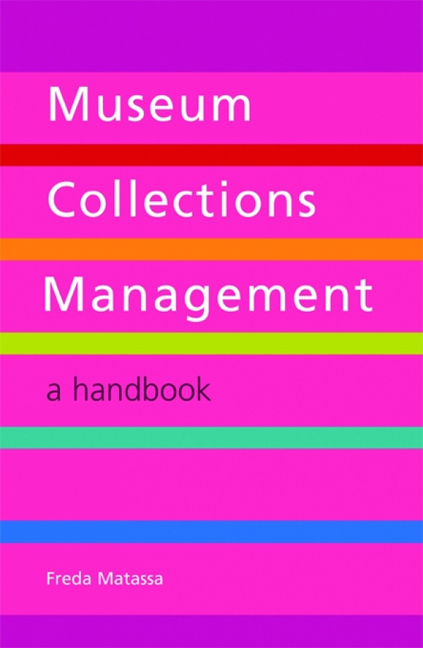1 - What is collections management?
from Part 1 - Collections management: overview and principles
Published online by Cambridge University Press: 08 June 2018
Summary
Fundamentals
Caring for our cultural history is both a delight and a privilege. Whether we are owners of historic objects, curators in major museums or volunteers in heritage sites, we have in our care precious and unique objects which describe the history of the world. With this trust comes the responsibility to manage our collections to the best of our ability and to care for the objects so as to ensure their preservation.
Collections management is fundamental to any collection of cultural objects. As well as basic inventory, it encompasses information, preservation, movement, documentation, exhibitions and access. These areas of activity should be addressed for every collection, whether large or small, public or private. Collections management can be summed up as: know what you have and where to find it. This knowledge provides owners and managers of cultural collections with the information they need in order to locate and care for the objects entrusted to them and to plan strategically for the future.
Know what you have and where to find it
Any collector of art must have some knowledge of what he has acquired and where it is. This can be as simple as recollections of where things came from, or the most detailed record keeping. The collector may simply have notes on the artists and the titles or cultural classifications of the objects he has collected, or he may keep detailed records of dates, places, invoices and other information. As to location, most collectors know where their objects are, even if they are distributed around one or several buildings, while, at the other end of the scale, the precise location of a museum object is usually noted and re‑documented each time it is moved.
Any method of keeping records of a collection of cultural objects can be called a collections management system. It usually has two parts, containing information on:
What is in the collection – what was purchased; received as a gift, donation or bequest; or acquired in some other way.
Where the objects are now – their present locations; or a record if they have left the collection through sale, donation, transfer, loss or destruction.
- Type
- Chapter
- Information
- Museum Collections Management , pp. 3 - 10Publisher: FacetPrint publication year: 2011



